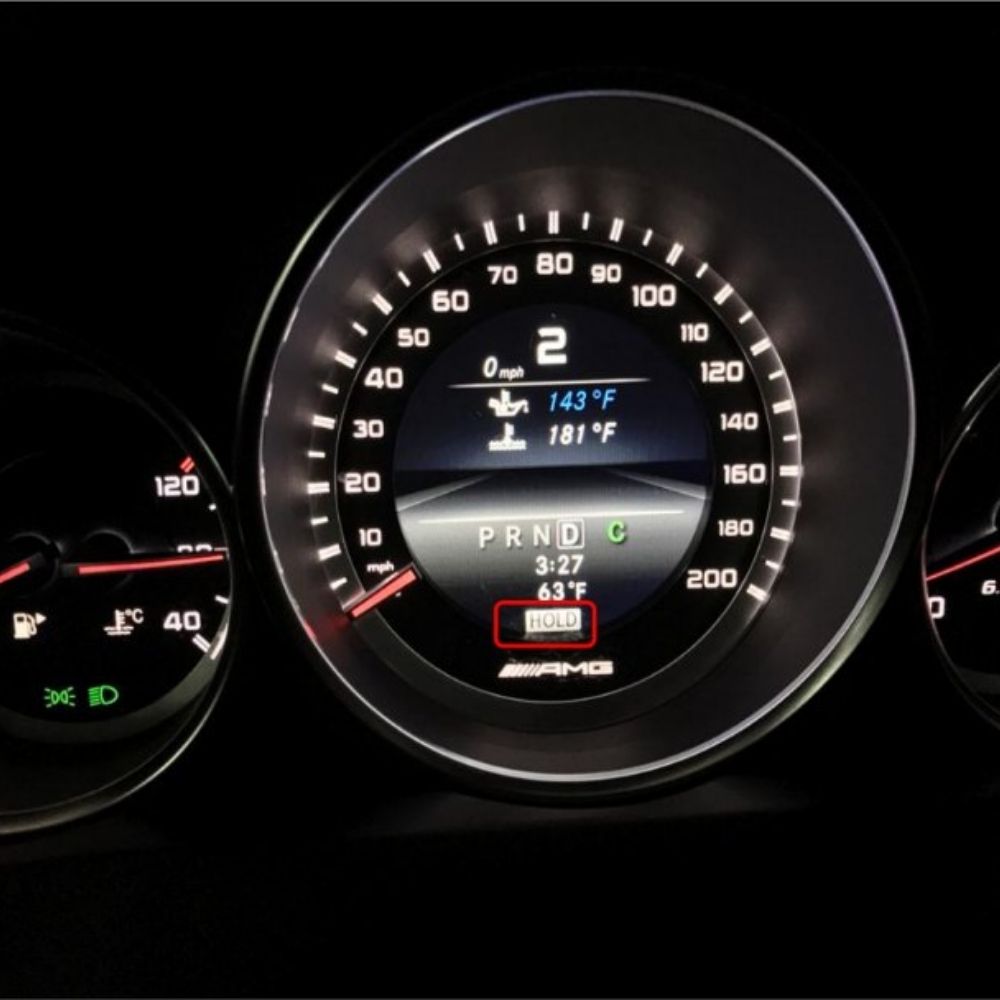
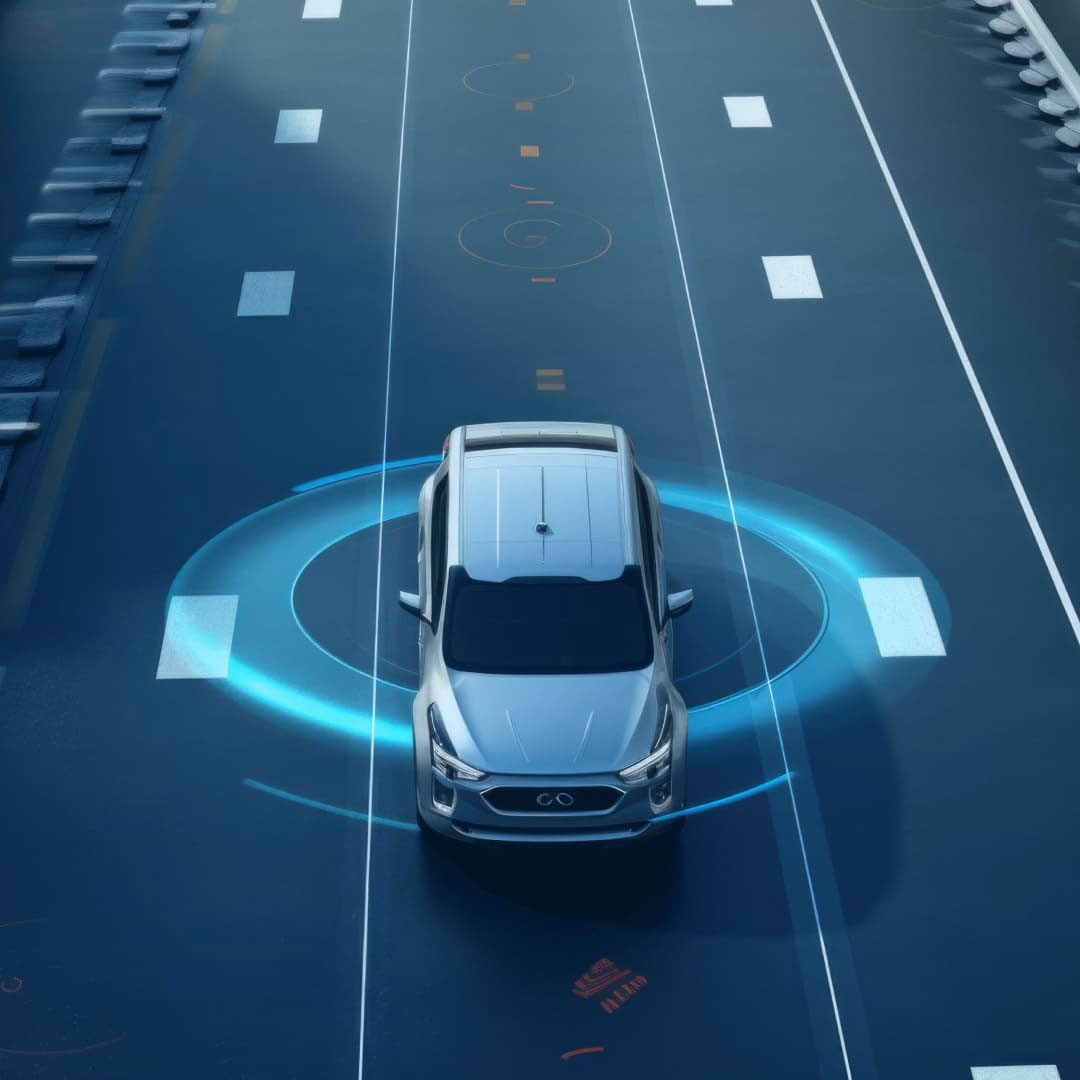
Driving is no longer just about hands on the wheel—it’s about smart systems watching your back. From automatic braking to lane keeping, Advanced Driver Assistance Systems (ADAS) are turning ordinary vehicles into intelligent co-pilots. In this article, we’ll explore how ADAS works, why it matters, and what it means for the future of driving and vehicle maintenance.
Table of Contents
ToggleAdvanced Driver Assistance Systems (ADAS) are a collection of electronic technologies integrated into modern vehicles to assist drivers during the driving process. These systems are designed to improve road safety by reducing human error, enhancing vehicle control, and providing real-time alerts and interventions when necessary.
ADAS systems rely on a network of sensors, cameras, radar, LiDAR, ultrasonic detectors, GPS, and electronic control units (ECUs). These components continuously gather and process data from the vehicle’s surroundings, enabling the system to make split-second decisions or notify the driver of potential hazards.
ADAS features can vary from simple warnings, such as alerting the driver about lane departures, to advanced autonomous actions, like automatic emergency braking or adaptive cruise control. Some vehicles even use driver monitoring systems (DMS) to detect drowsiness or distraction, improving driver engagement and safety.
ADAS can be grouped into two main categories:
With the growing emphasis on autonomous and connected vehicles, ADAS plays a crucial role as the technological bridge between conventional driving and full autonomy. By enhancing driver awareness and reducing reaction times, ADAS is becoming a critical feature in modern vehicle safety standards.
=> Learn more about ADAS System in e-learning platform of AutoExplain for free: Visit ADAS System Course
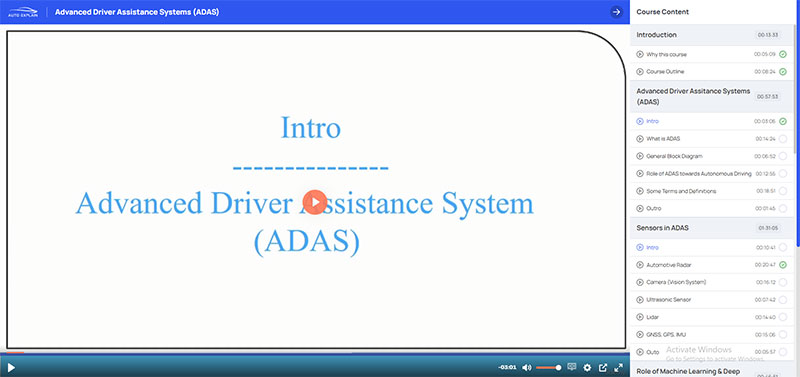
Understanding the core components of Advanced Driver Assistance Systems (ADAS) is essential for proper diagnostics, maintenance, and calibration. Each ADAS feature relies on a network of sensors and modules strategically placed around the vehicle to monitor the environment, recognize potential hazards, and assist or intervene during driving.
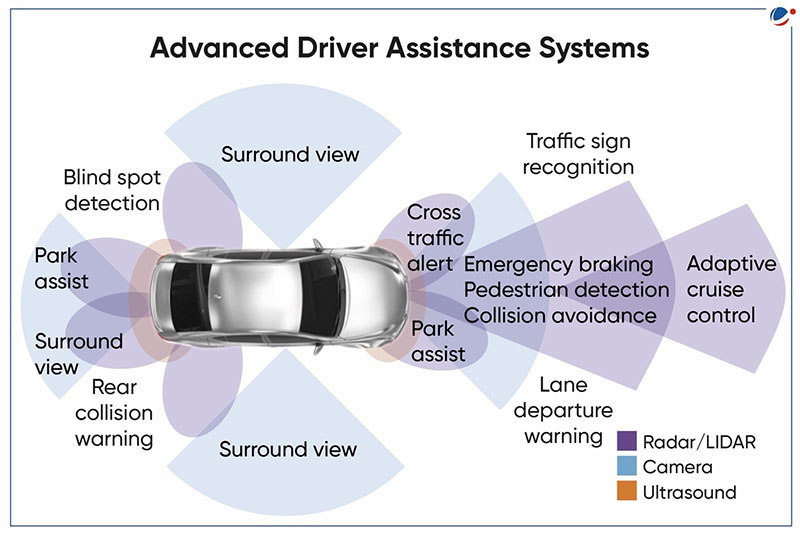
Below are the primary ADAS components, their functions, and common mounting locations:
Function:
Detects lane markings, traffic signs, pedestrians, vehicles ahead.
Supports systems like Lane Departure Warning (LDW), Lane Keeping Assist (LKA), Traffic Sign Recognition (TSR), and Automatic Emergency Braking (AEB).
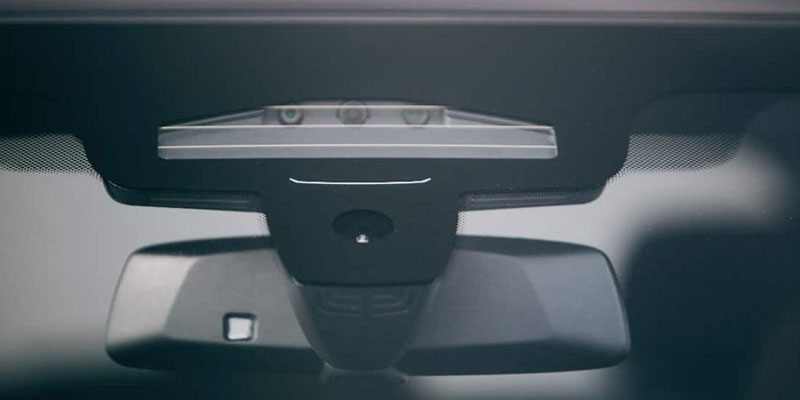
Location:
Typically mounted behind the windshield, near the rearview mirror.
Requires precise angle and visibility for accurate detection—affected by windshield replacement or improper mounting.
Function:
Measures distance and speed of vehicles ahead or behind using radio waves.
Supports Adaptive Cruise Control (ACC), Forward Collision Warning (FCW), Rear Cross Traffic Alert (RCTA), and AEB.
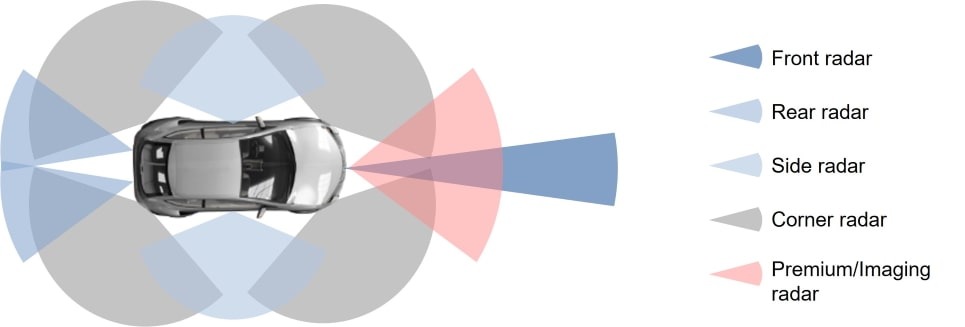
Locations:
Front radar: Mounted behind the front grille, bumper, or emblem.
Rear radar: Embedded in rear bumpers for blind spot detection and RCTA.
Note: Even small misalignments (from bumper damage or mounting bracket deformation) can impair function.
Function:
Detects nearby obstacles during low-speed maneuvers.
Supports Parking Assist, Rear Automatic Braking, and 360° camera systems.
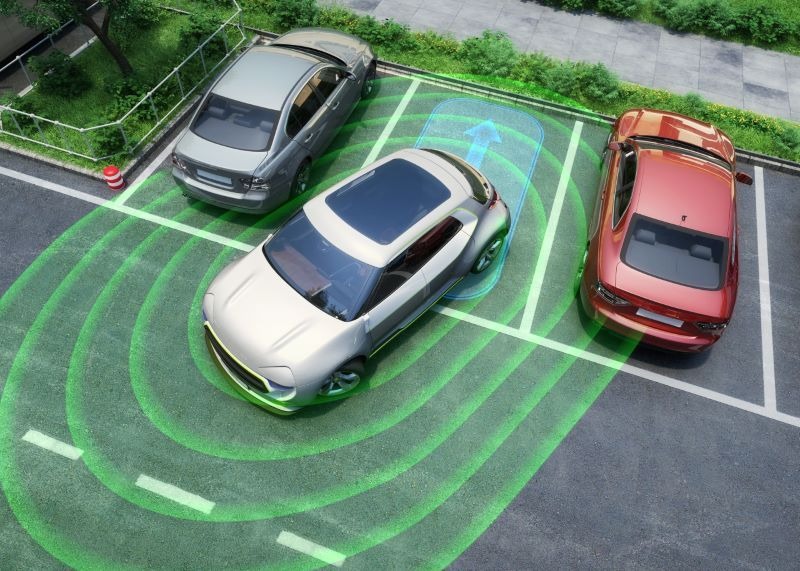
Locations:
Installed in front and rear bumpers, often flush-mounted in visible plastic caps.
Typically short-range (1–5 meters), highly sensitive to paint thickness or bumper repairs.
Function:
Provides high-resolution 3D imaging using laser light.
Supports advanced features like automated driving, object classification, and pedestrian detection.
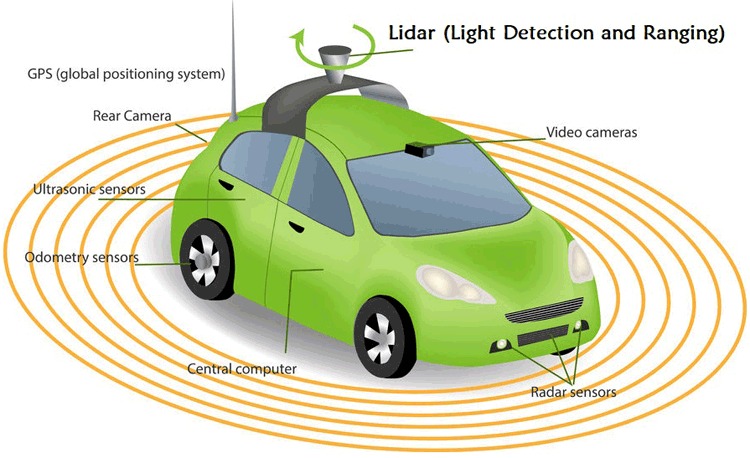
Locations:
Found in higher-end or semi-autonomous vehicles, often placed in grilles, bumpers, side mirrors, or roof modules.
Note: Still emerging in consumer vehicles but critical for Level 3+ autonomy.
Function:
Monitors driver eye movement, head position, and alertness.
Supports Drowsiness Detection, Attention Assist, and Lane Centering with driver override.
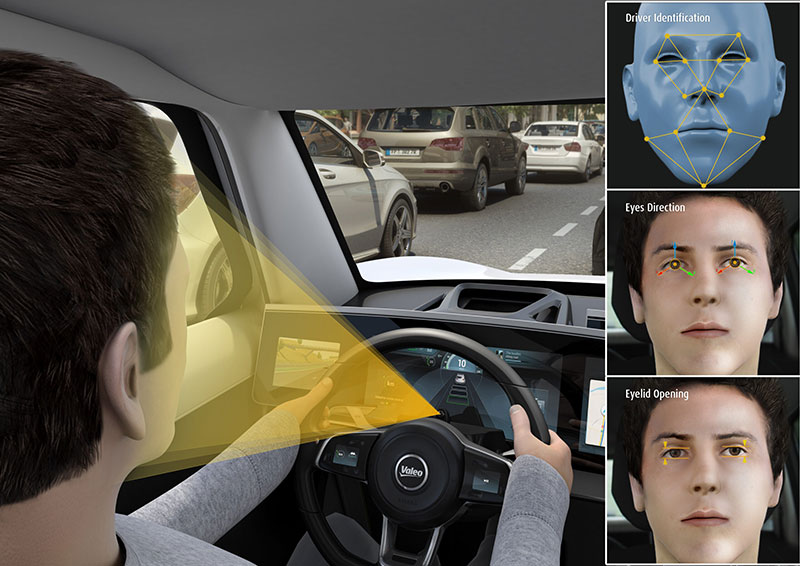
Location:
Mounted inside the instrument cluster or integrated into the steering column or A-pillar.
Function:
Tracks vehicle position, direction, and orientation.
Supports functions like lane-keeping assist, highway pilot systems, and enhanced navigation.
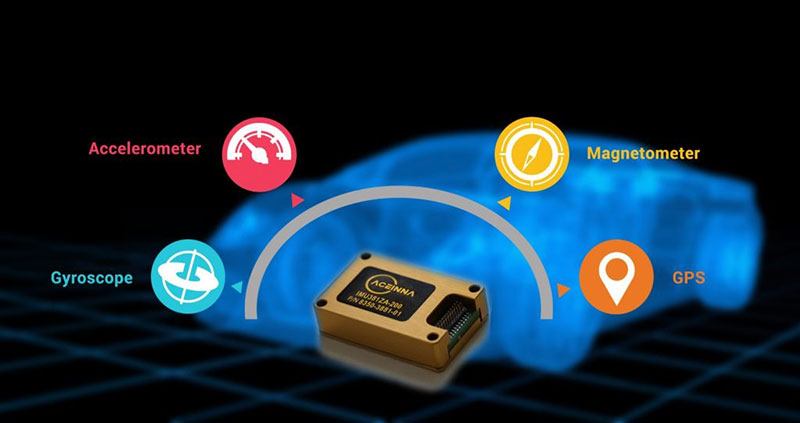
Locations:
GPS antenna: Mounted on the roof or rear parcel shelf.
IMU: Often integrated into the vehicle’s main ECU or ABS module.
Function:
Processes sensor inputs and issues commands to braking, steering, or throttle systems.
Coordinates communication across the CAN or Ethernet vehicle network.
Location:
Hidden behind dash panels, under seats, or within the engine bay, depending on system design.
Examples: Front Camera ECU, Radar Control Unit, ACC Module.
Advanced Driver Assistance Systems (ADAS) are composed of a variety of sub-systems designed to enhance driving safety, reduce human error, and improve overall vehicle control. These systems work together using sensors, cameras, radar, LiDAR, and advanced computing to monitor the environment around the vehicle and assist the driver in real time.
Below is a breakdown of the main systems within ADAS, categorized by their function:
These systems are designed to help prevent accidents or reduce their severity.
Forward Collision Warning (FCW):
Uses radar and cameras to detect vehicles ahead and alerts the driver of a potential collision.
Automatic Emergency Braking (AEB):
If the driver does not respond to the FCW alert, AEB will automatically apply the brakes to avoid or mitigate a crash.
Brake Assist System (BAS):
Detects emergency braking situations and increases brake pressure automatically if the driver does not apply enough force.
Rear Cross Traffic Alert (RCTA):
Detects approaching vehicles from the sides when reversing out of parking spaces and warns the driver or brakes automatically.
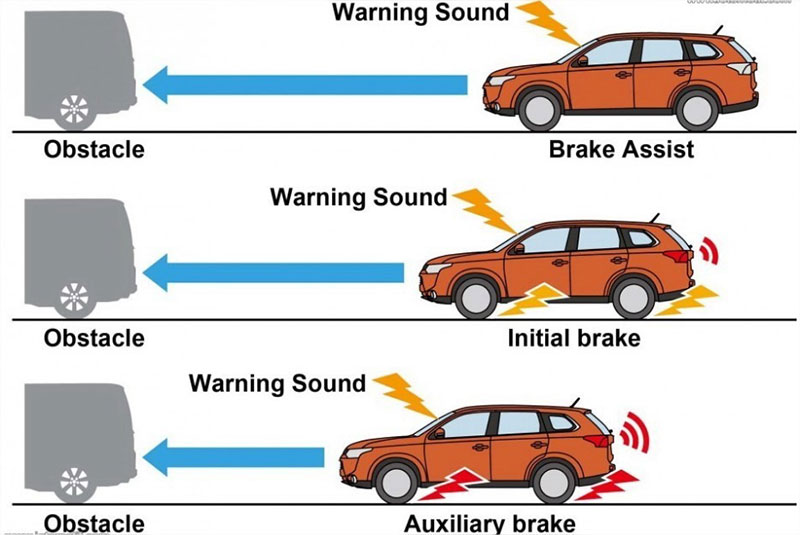
These systems help the vehicle stay within lane boundaries and avoid unintentional drifting.
Lane Departure Warning (LDW):
Warns the driver if the vehicle begins to drift out of its lane without using a turn signal.
Lane Keeping Assist (LKA):
Provides small steering corrections to keep the vehicle centered within its lane.
Lane Centering Assist:
Actively keeps the vehicle centered between lane lines at all times while driving on highways.
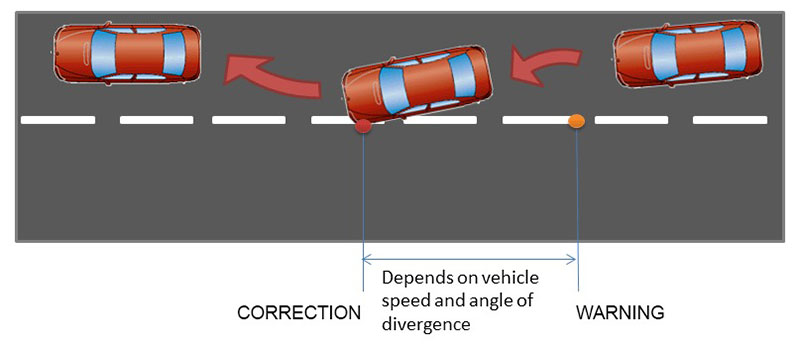
These systems automate speed and steering functions, particularly during highway driving.
Adaptive Cruise Control (ACC):
Maintains a set speed but automatically slows down or accelerates to keep a safe distance from the vehicle ahead.
Traffic Jam Assist:
A low-speed ACC combined with steering support, useful in heavy traffic conditions.
Highway Driving Assist (HDA):
Integrates ACC, LKA, and navigation data to provide semi-autonomous driving on highways.
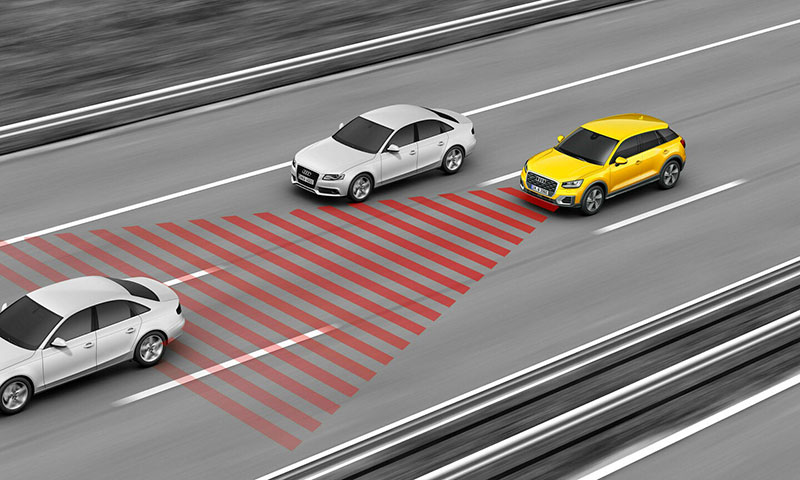
These systems improve driver awareness of vehicles or objects in hard-to-see areas.
Blind Spot Detection (BSD) / Blind Spot Monitoring (BSM):
Alerts the driver if a vehicle is in the blind spot area during lane changes.
Blind Spot Collision Avoidance Assist (BCA):
Applies braking or steering corrections if a collision is likely during a lane change.
Surround View Monitor (360° Camera):
Provides a top-down view of the vehicle using multiple cameras to assist in parking or low-speed maneuvering.
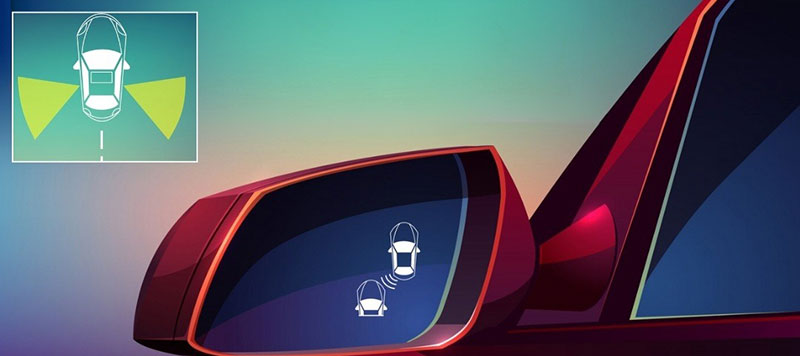
These systems make parking safer and more convenient.
Park Distance Control (PDC):
Uses ultrasonic sensors to detect nearby objects during parking and provides audible or visual warnings.
Rear Automatic Braking (RAB):
Applies the brakes automatically if the system detects an object while reversing.
Automatic Parking Assist (APA):
Steers the vehicle into a parking space with minimal or no driver input (parallel or perpendicular parking).
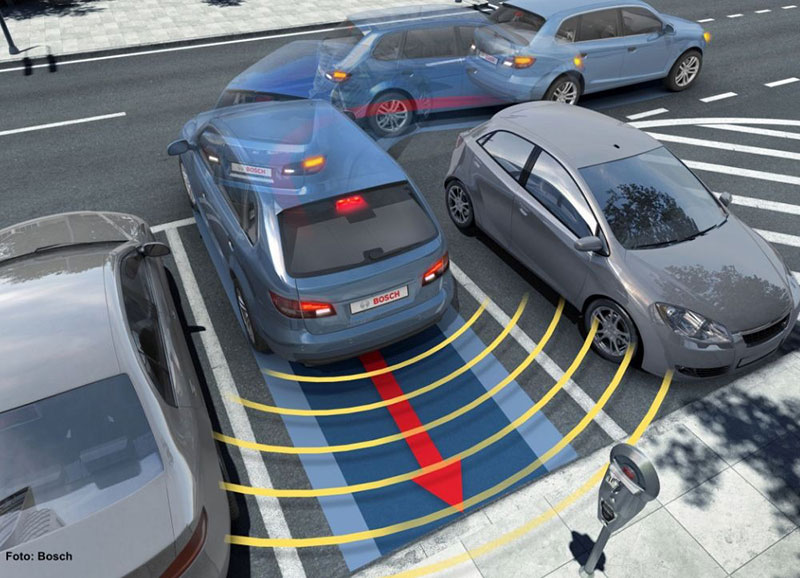
These systems observe the driver’s behavior to ensure they are alert and attentive.
Driver Attention Monitoring:
Detects signs of drowsiness or distraction based on steering patterns or facial expressions.
Face and Eye Tracking Systems:
Use interior cameras to monitor eye movement and head position to ensure the driver is watching the road.
These systems help the vehicle “see” and interpret road signs and surrounding conditions.
Traffic Sign Recognition (TSR):
Reads and displays road signs like speed limits or no-passing zones on the dashboard.
Intelligent Speed Assist (ISA):
Warns or adjusts vehicle speed based on detected speed limit signs.
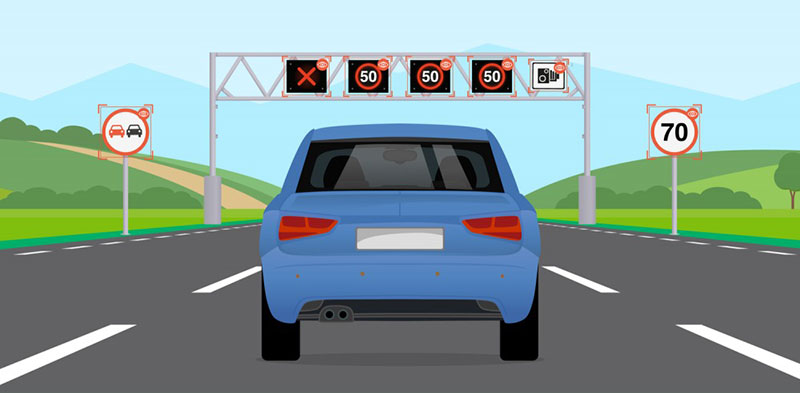
These systems use GPS data and map input to optimize driving safety and efficiency.
Navigation-Based Smart Cruise Control:
Adjusts speed based on upcoming road curvature or speed limits based on map data.
Predictive Speed Control:
Slows down automatically before curves, toll booths, or exits based on GPS input.
=> Discover Update Navigation Map Service
Implementing advanced driver assistance systems (ADAS) delivers a range of benefits, not only for drivers but also for the broader transportation ecosystem.
A study by the Insurance Institute for Highway Safety (IIHS) found that vehicles equipped with Forward Collision Warning (FCW) and Automatic Emergency Braking (AEB) experienced 50% fewer front-to-rear crashes, and 56% fewer injury crashes of this type .
Similarly, Lane Departure Warning (LDW) systems reduced the rate of single-vehicle, sideswipe, and head-on crashes by 11%, and injuries related to these crashes by 21% .
Blind Spot Detection (BSD) systems have been shown to reduce lane-change crashes by 14%, and lane-change crashes with injuries by 23% .
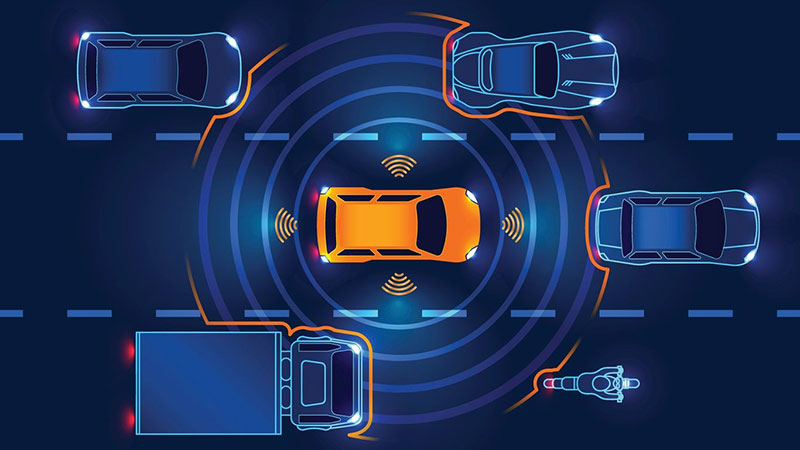
When Rear Automatic Emergency Braking (Rear AEB) is combined with parking sensors and cameras, it can reduce backing crashes by a remarkable 78%, according to IIHS research .
Vehicles with Rear Cross Traffic Alert (RCTA) showed a 22% reduction in backing crashes compared to those without the feature
A 2020 study from IIHS indicated that pedestrian AEB systems could reduce pedestrian crash rates by 27%–30%, especially during daylight and in slower traffic conditions
ADAS calibration is the process of precisely aligning sensors, cameras, radar, and LiDAR systems so they function accurately within a vehicle’s safety systems. Since even a slight misalignment can lead to false alerts or system failure, calibration is critical to ensuring the safety and reliability of features like lane keeping assist, adaptive cruise control, and automatic emergency braking.
5.3.1. Static Calibration
Performed in a controlled environment using targets placed at specific distances. Often used for forward-facing cameras and sensors.
5.3.2. Dynamic Calibration
Conducted while driving the vehicle at specific speeds and conditions so that the system can calibrate using real-world data.
The evolution of ADAS is closely tied to innovations in AI, machine learning, connectivity, and sensor technologies. Here are the major trends expected to shape the future:
ADAS will increasingly interact with other vehicles, infrastructure, and cloud services to improve situational awareness and decision-making.
Machine learning models will help ADAS anticipate driver behavior, traffic flow, and potential hazards in advance.
ADAS will evolve from assistive to fully autonomous functions (Level 3, 4, and eventually 5 autonomy).
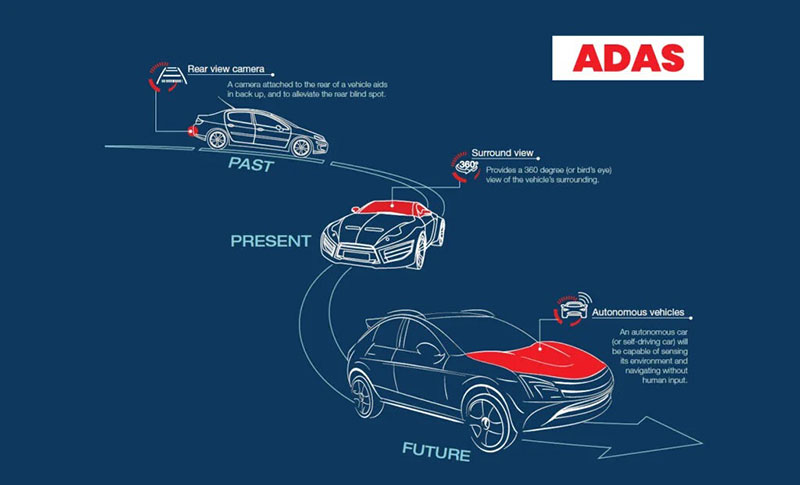
Processing ADAS data locally on the vehicle (edge computing) will reduce latency and improve response times.
More vehicles will receive real-time ADAS software improvements via OTA updates, reducing the need for in-shop visits.
With component costs decreasing, even budget vehicles will come equipped with advanced driver assistance systems.
Advanced Driver Assistance Systems (ADAS) represent a monumental leap toward safer, smarter, and more efficient driving. Understanding what is advanced driver assistance systems, their features, and how ADAS calibration works is essential not only for consumers but also for automotive professionals. As we move toward autonomous vehicles, the role of advanced driver assistance systems ADAS will become even more central to the automotive world.
Contact AutoExplain today for expert assistance:
WhatsApp: +1(936)2896695
Email: [email protected]
Website: AutoExplain


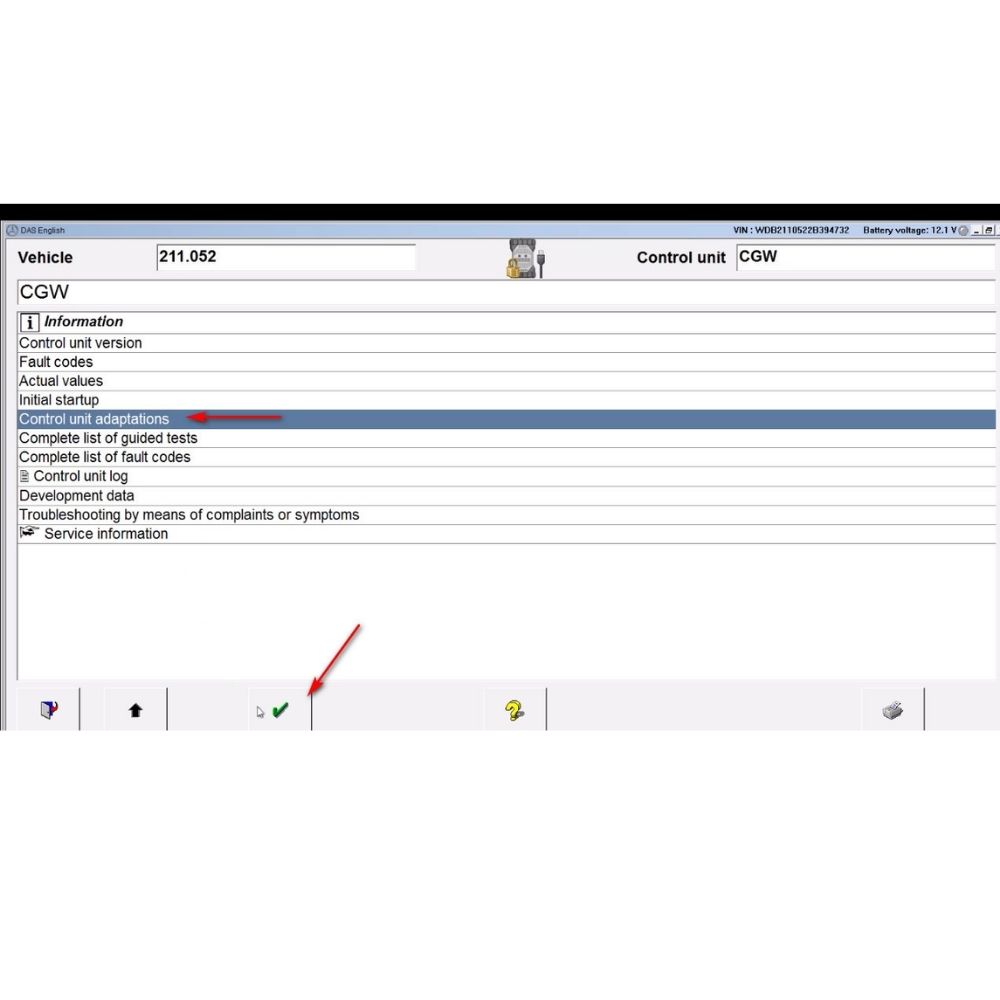


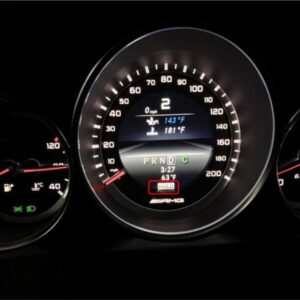

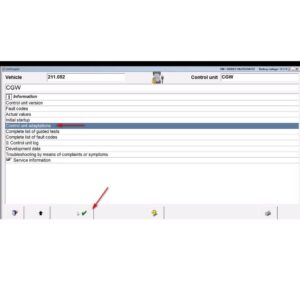
At AutoExplain, we provide automotive online repair service, auto repair tips, car repair manuals & document & training course to help mechanics of all experience levels—fix vehicles efficiently
AUTO EXPLAIN LLC
Employer Identification Number (EIN):
38-4349958
Whatsapp Us: +1(936)2896695
Gmail: [email protected]
Our Workshop: 1500 N Grant ST Sten Denver, Colorado, United States
Copyright 2025 © AutoExplain